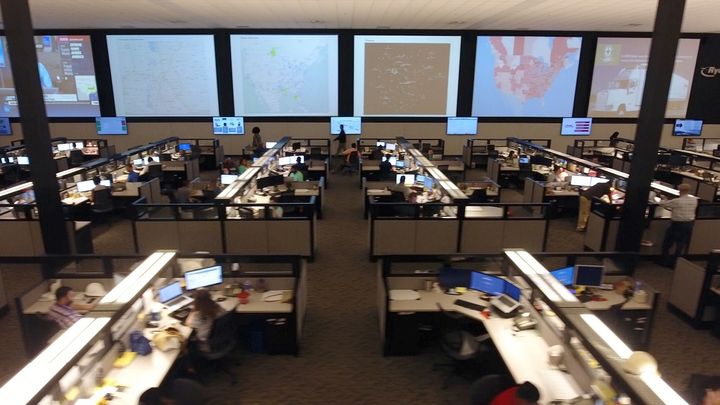Why Fleets Should Care About Logistics and Supply Chains
Once upon a time, trucking was basically about moving freight in a truck or trailer from Point A to Point B, whether you were a private fleet hauling your own company’s goods or a for-hire fleet hauling loads for shippers or brokers. Before deregulation, for-hire contract carriers weren’t even allowed to have more than eight shippers as customers. “Logistics” and “supply chains” were the worries of shippers or third-party logistics companies.
Today, however, I would argue that even the smallest carriers need to know more about logistics. Why, you ask?
Supply chain and logistics trends affect your business in many ways, both short- and long-term.
For a short-term example, look at the upheaval we’re seeing in global supply chains because of politics and trade wars. The usual seasonal patterns of freight into the nation’s ports last year were disturbed as companies tried to bring in more inventory before tariffs on Chinese goods took effect. With threats of border closures and slowdowns at border crossings under the Trump administration, those supply chains are disrupted. Some shippers have even been considering whether intermodal may be a better way to move cargo than by truck.
For a longer-term example, look at the rise of e-commerce. What’s often called the Amazon effect has helped push a new market in last-mile delivery, more regional routes, smaller and more urban warehousing and fulfillment centers, and an expectation of customers to be able to know not only when their shipment is going to arrive, but where it is in the system. All those trends can present challenges for trucking fleets, especially small ones – but they also can create opportunities.
Many large fleets that were pioneers in truckload now offer customers much more than freight transport. Google “Schneider,” and the name comes up “Schneider | Transportation and Logistics Services.” It offers supply chain management, network design and optimization, and not just in North America. Go to J.B. Hunt’s website, and the home page touts “Supply chain solutions: Our integrated, multimodal approach includes logistics management services for any transportation need.”
Logistics management is a big bucket. It involves all levels of planning and execution – strategic, operational, and tactical. It means efficiently managing the flow of freight, from inbound materials to plants and factories all the way through to final-mile e-commerce delivery. That may include moving freight not only on trucks, but also via other modes such as train, air, and ocean containers. It’s not just moving the freight, but also optimizing the network and routes and minimizing empty miles. It can cover warehousing, order fulfillment, even packaging.
As you can see in this month’s cover story, a big key to making it all work is the use of technology to keep everything running efficiently and to give customers visibility into where their freight is and when it’s going to get where it’s going.
That technology, and its increasing accessibility and affordability for all types of carriers, is part of the reason you now see smaller fleets offering their customers broader logistics services.
Another reason is simply that in the competitive, low-margin world that is trucking, being able to help your customers with more of their needs, even offering a turnkey solution, will help you get and keep customers, and bring in additional revenue not tied to how many miles a truck makes in a day. That may start with adding your own brokerage operation to find capacity to offer extra freight, or managing a nearby warehouse.
And even if you can’t offer those services, technology is making it easier to team up with third-party logistics providers that can, allowing you access to larger customers through the 3PL’s aggregation of smaller-carrier capacity.
These trends are why we dug into the changing world of logistics for this month’s cover story, and why we’re adding a FleetLogistics page to our Hotline section to cover some of the latest news and trends in logistics affecting our readers.
Source: https://www.truckinginfo.com
FLEET MANAGEMENT AUDIT
Fleet management is the use of a set of vehicles in order to provide services to a third-party, or to perform a task for our organization, in the most efficient and productive manner with a determined level of service and cost.
Fleet management activities are shown in the following graph 1:

Graph 1: fleet management activities
The proposal audit analyses and assesses all fleet management activities shown in the graph 1, and its main goals are:
- Know the overall status of the fleet management activities
- Provide the analysis, the assessment, the advice, the suggestions and the actions to take in order to cut costs and increase the efficiency and efficacy of the fleet management activities
With the information obtained, we’ll elaborate a report that holds the overall status of the fleet management as well as the suggestions, recommendations and the measures to take in order to cut costs and optimize the fleet management activities.
CLICK ON THE FOLLOWING LINK TO DOWNLOAD THE PROPOSED FLEET MANAGEMENT AUDIT:
Fleet Management Audit AFMC
Contact:
José Miguel Fernández Gómez
34 678254874
info@advancedfleetmanagementconsulting.com



